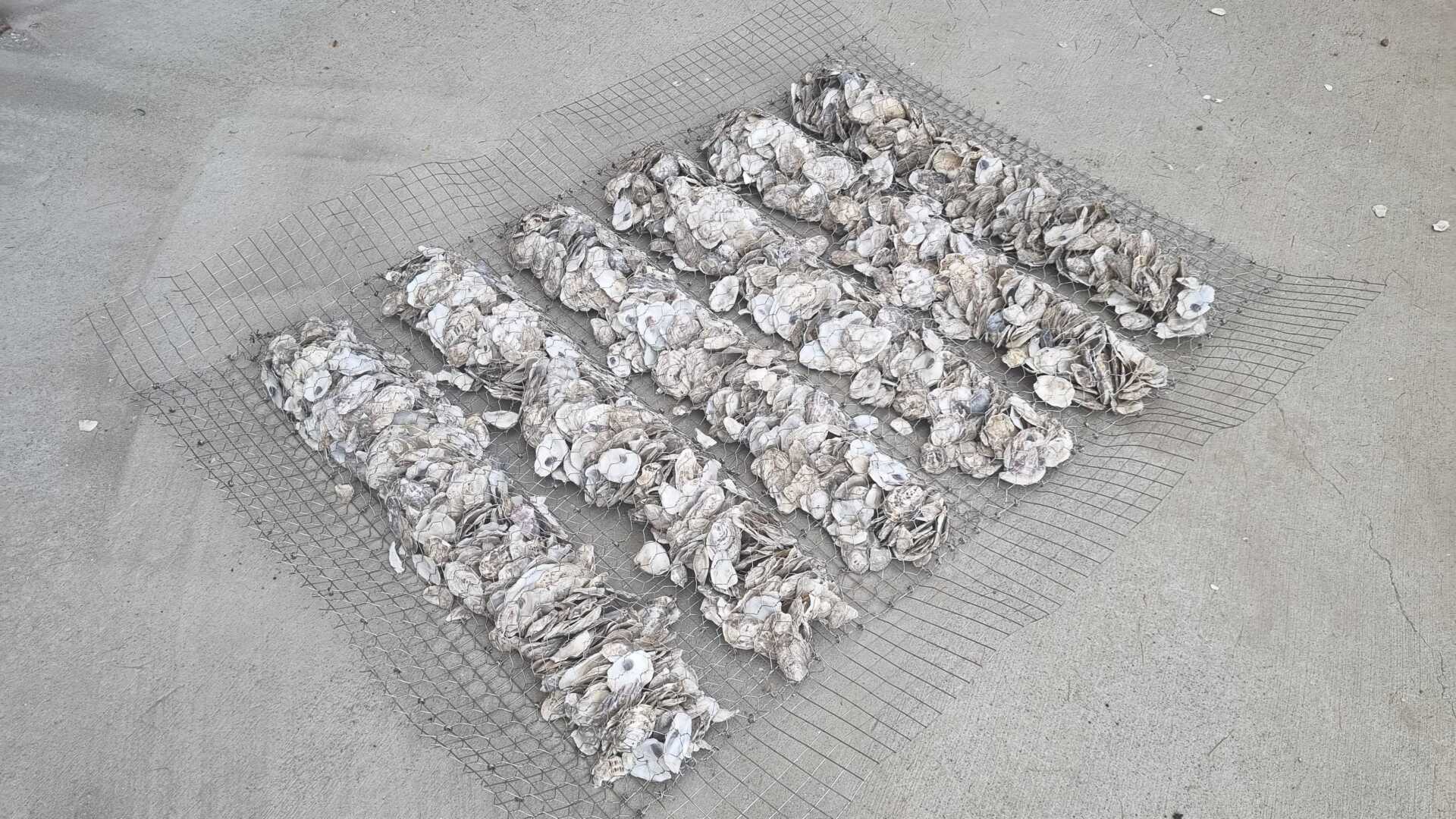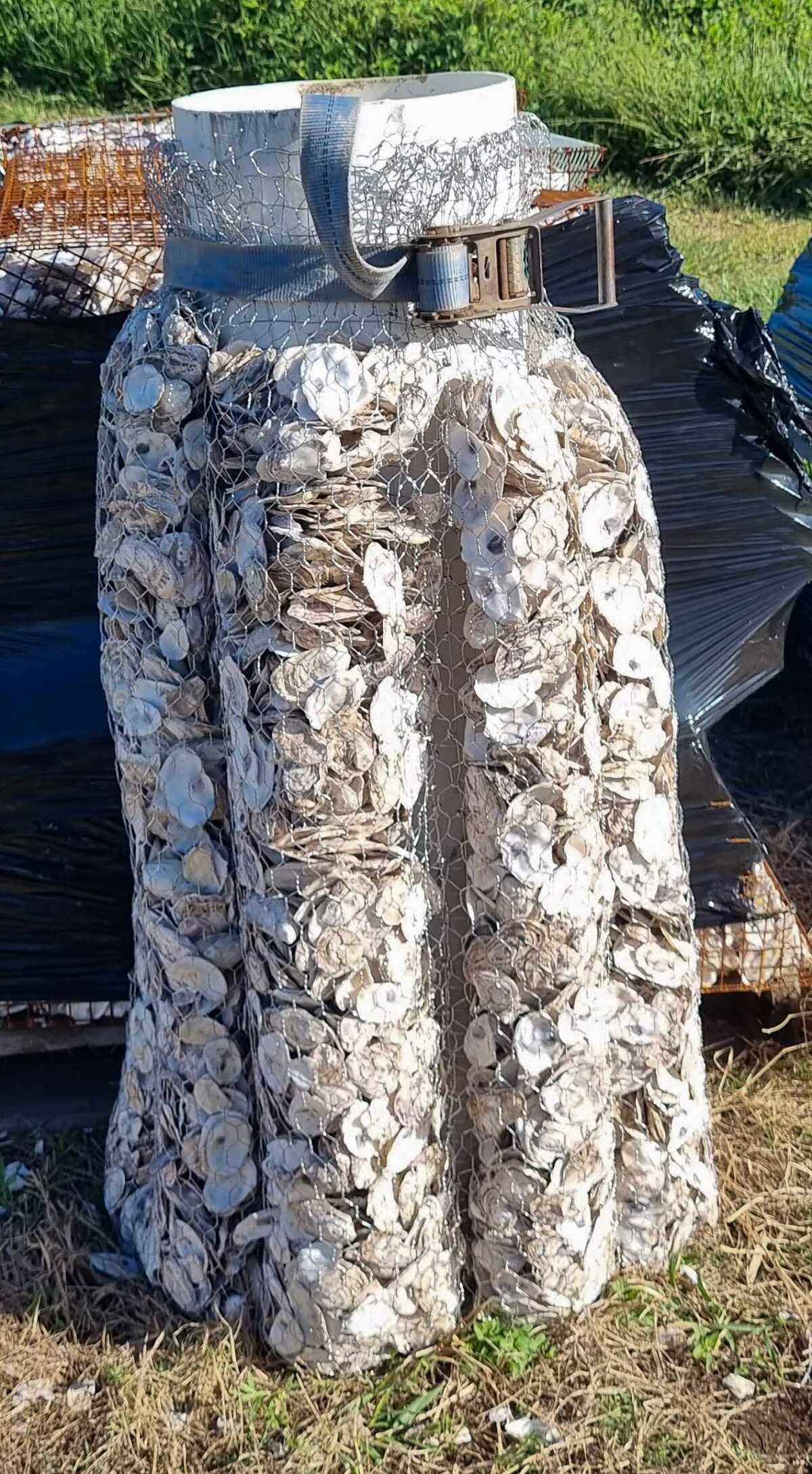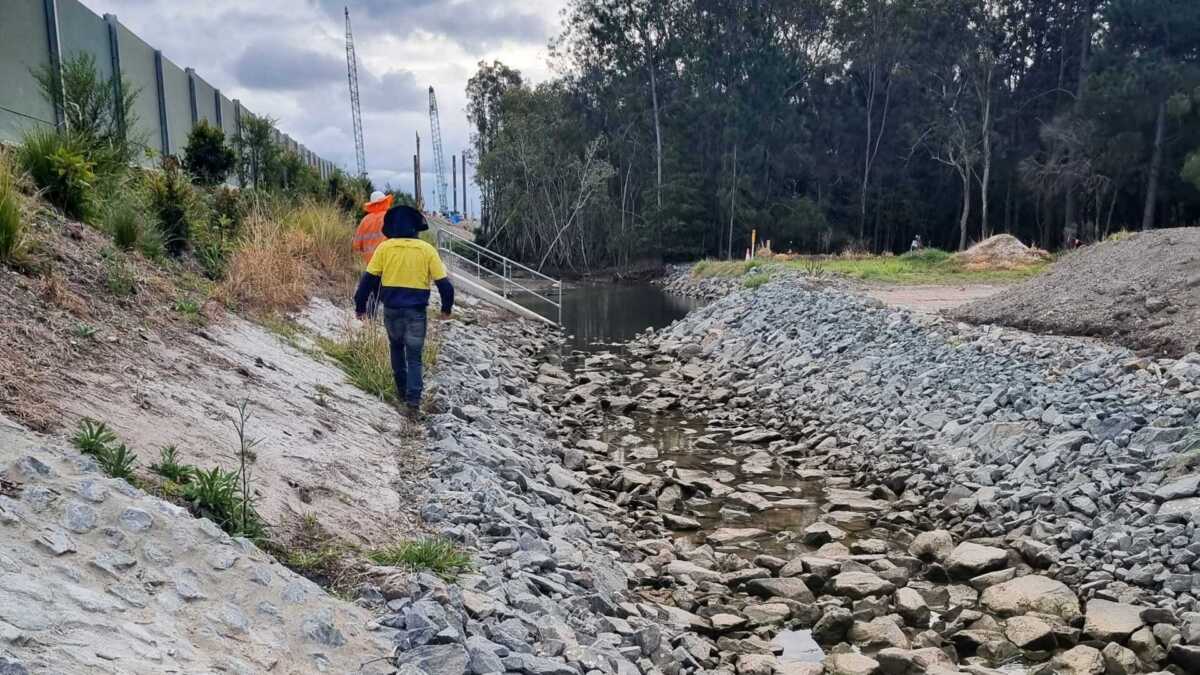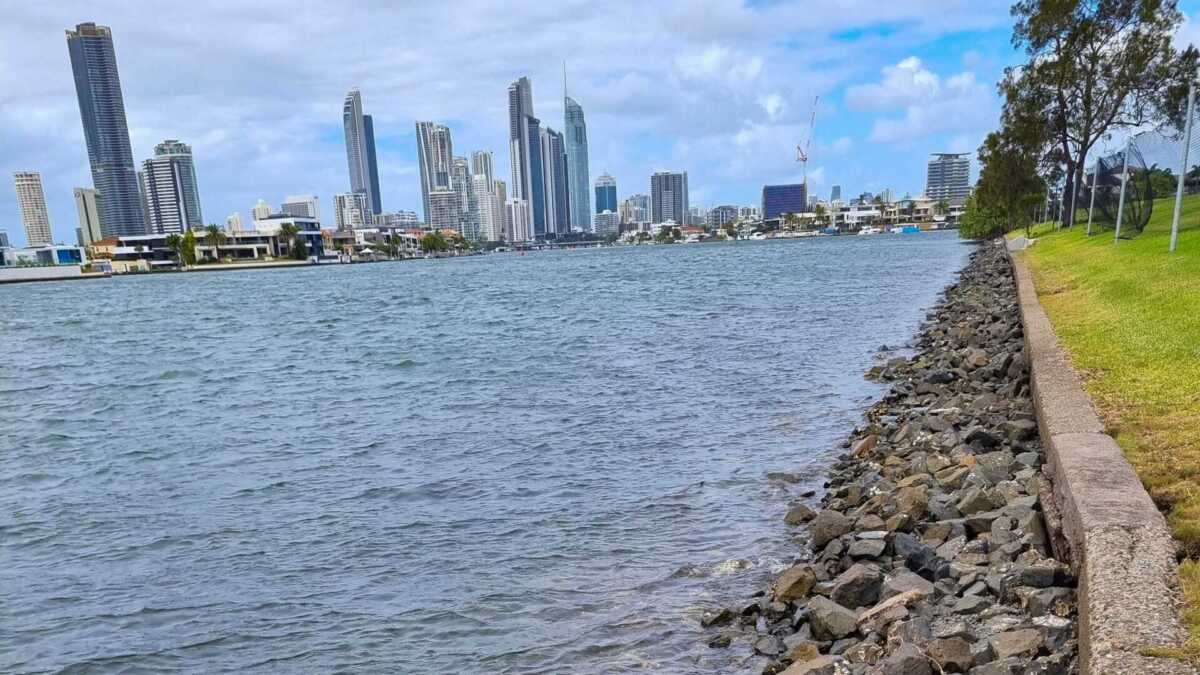Quilted Oyster Doonas adding versatility to shellfish restoration

OzFish Unlimited continues to innovate the shellfish revolution with the upcoming trial of Quilted Oyster Doonas (QODs) set to bring an added layer of versatility to restoration projects.
The QOD concept is composed of a non-degrading, flexible gabion blanket that incorporates recycled oyster shells which can be securely attached to rock walls, eroding banks, and urbanised waterways, effectively transforming these structures into vibrant living seawalls.
After building a prototype, the QODs will be tested in the Nerang River in the coming months.
Robbie Porter, OzFish’s Senior Special Projects Officer – Shellfish Revolution, has invented the QOD, which is designed to address specific challenges in restoring and enhancing shellfish populations along breakwaters, pylons or urban structures.
They are constructed using stainless steel welded wire and woven mesh, ensuring durability and longevity in marine environments.
“No one has ever done something like this before,” Mr Porter said.
“Effectively they are stainless-steel chicken wire that we make an envelope out of and put shells inside it. To stop all the shells falling to one end we quilt the chicken wire, so the shells are spread out evenly, much like duck down in a doona.
OzFish will trial the doonas through a partnership with The Southport School (TSS) on the Gold Coast as part of the restoration trial.
QODs measuring 15 metres in total will be strategically placed on the sea walls at TSS, situated on the picturesque banks of the Nerang River, which has been significantly impacted, with numerous houses lining its banks.
The project should increase biodiversity and contribute to improved water filtration, bolstering fish numbers in the river.
“We have thousands of kilometres of rock seawalls all around Australia, but their ecological value is quite limited. These rock walls are typically dark in colour and they absorb heat from the sun, and cook the baby oysters.
“They tend to accumulate a thin layer of mud and algae, making it challenging for oysters to attach and grow. Also, these walls are open and flat making them the perfect spot for predators to find and eat the baby oysters.
Transforming these rock walls into living seawalls seemed like a straightforward solution, and the ecological benefits look to be substantial.
One key aspect of their effectiveness lies in the use of recycled and sanitised oyster shells. The complex nature and chemical signature of these shells make them highly attractive to spat (baby oysters), or young shellfish, thereby serving as an ideal substrate for shellfish recruitment.
The presence of the recycled oyster shells within the QOD creates an inviting environment for shellfish to settle and grow, promoting the establishment of thriving reef ecosystems.
This innovative approach offers a myriad of opportunities for shellfish restoration and contributes to the ecological resilience and biodiversity of our marine ecosystems.
“They are being placed at the trial sites to coincide with the peak oyster spawning period in summer. Eventually oyster reefs could come back but it could take hundreds, or even thousands of years and we need them now,” Mr Porter explained.
“The services they provide are excellent – they filter the water, increase biodiversity and they’re little nurseries for fish.”
If successful, OzFish plans to mobilise its army of volunteers to make the QODs with councils and civil engineers expected to be keen to use them in future projects.
“I think they’re going to be really well utilised,” Mr Porter added.
“There will be a lot of hidey-holes for ambush predators like mangrove jack and estuary cod, to live and hide in. They’ll give lots of overhanging spaces for invertebrates like sponges, limpets, crabs and worms to hide in.
“And rec fishers know that where there is food, there are fish, so they’ll develop into great spots to fish as well
“We can make them into a vertical curtain underneath jetties. You could do several in a row and you could make some complex structures that would be attractive to a lot of fish.
“If they work, we believe they’ll be very versatile that could have lots of applications.”
The collaboration between OzFish and TSS highlights our shared commitment to environmental conservation and the restoration of vital aquatic ecosystems.
This ambitious initiative has received funding from Queensland Fisheries through the Queensland Community Fishing Grants program, enabling OzFish to bring this innovative project to life.
It will also provide educational opportunities for students at TSS to learn about the importance of environmental stewardship and the role of shellfish in ecosystem health.
By combining innovative engineering and ecological principles, we aim to set new standards for shellfish reef restoration and inspire similar initiatives around the country.





